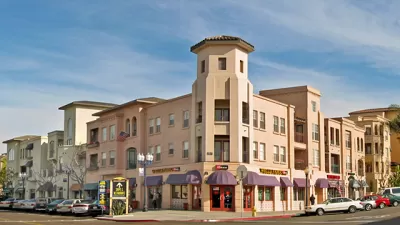New data points to the continued worsening of rental housing affordability. Due to a lack of federal response, some state and municipal governments are taking matters into their own hands in an attempt to add to their supply of affordable housing.
The 2016 State of the Nation’s Housing Report published by Harvard’s Joint Center for Housing Studies once again points to the continued worsening of rental housing affordability as a significant societal issue calling for a more concerted response. Citing recent data from the American Community Survey, the report found that the number of renters facing housing cost burdens (i.e. paying more than 30 percent of their income for housing costs) hit another record high of 21.3 million, which is just about half of all renter households in the nation. More concerning, the number of people facing severe cost burdens (devoting more than half their income to housing), also reached a new record of 11.4 million. The report documents how the affordability crisis is getting new and greater policy attention, particularly at the state and local level. Indeed, with federal response failing to keep up with the need, a growing number of state and municipal governments have been taking matters into their own hands in attempts to add to the supply of affordable housing.
Affordability problems are nearly universal for the lowest income households. For those making $15,000 per year—roughly the equivalent of full time work at the federal minimum wage—83 percent are housing cost burdened. For most of these households, the level of burden is severe, with 72 percent of the lowest-income renters and 66 percent of the lowest-income owners paying over half their monthly household incomes towards housing.
But cost burdens are not limited to low-income households. They are increasingly climbing up the income scale to reach more and more moderate-income households.
FULL STORY: As Affordability Worsens, State and Local Governments Act on their Own

Planetizen Federal Action Tracker
A weekly monitor of how Trump’s orders and actions are impacting planners and planning in America.

Map: Where Senate Republicans Want to Sell Your Public Lands
For public land advocates, the Senate Republicans’ proposal to sell millions of acres of public land in the West is “the biggest fight of their careers.”

Restaurant Patios Were a Pandemic Win — Why Were They so Hard to Keep?
Social distancing requirements and changes in travel patterns prompted cities to pilot new uses for street and sidewalk space. Then it got complicated.

Platform Pilsner: Vancouver Transit Agency Releases... a Beer?
TransLink will receive a portion of every sale of the four-pack.

Toronto Weighs Cheaper Transit, Parking Hikes for Major Events
Special event rates would take effect during large festivals, sports games and concerts to ‘discourage driving, manage congestion and free up space for transit.”

Berlin to Consider Car-Free Zone Larger Than Manhattan
The area bound by the 22-mile Ringbahn would still allow 12 uses of a private automobile per year per person, and several other exemptions.
Urban Design for Planners 1: Software Tools
This six-course series explores essential urban design concepts using open source software and equips planners with the tools they need to participate fully in the urban design process.
Planning for Universal Design
Learn the tools for implementing Universal Design in planning regulations.
Heyer Gruel & Associates PA
JM Goldson LLC
Custer County Colorado
City of Camden Redevelopment Agency
City of Astoria
Transportation Research & Education Center (TREC) at Portland State University
Camden Redevelopment Agency
City of Claremont
Municipality of Princeton (NJ)





























